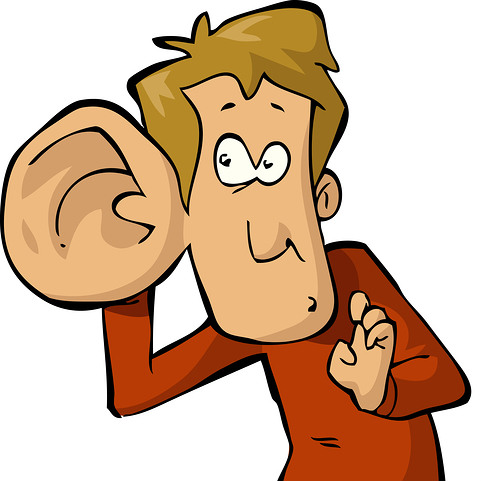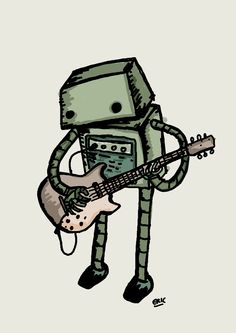How to play songs “by Ear”
 Imagine if you could show up to a jam, sit down and play along with every song…without knowing them!! Imagine if you didn’t need charts, but could listen for a few minutes and then jump in, hitting all the right chords…is this possible? Absolutely.
Imagine if you could show up to a jam, sit down and play along with every song…without knowing them!! Imagine if you didn’t need charts, but could listen for a few minutes and then jump in, hitting all the right chords…is this possible? Absolutely.
In fact all of our instructors here at JamAlong Music are expected to be able to do this, you can see an example of this with our instructor Brae teaching Wagon Wheel “by ear” on YouTube HERE. And yes, you too can be this quick!
This can be done when you know how to “play by ear”, when you’ve learned to follow along just by listening and you don’t need to worry about having any music, or pestering the guitar player to tell you the chords. And if you want to learn this awesome skill, we have some good news and some bad news… First, the bad news: learning to do this does take some time. Now don’t worry, it doesn’t have to be years, in fact if you follow our Backing Track Ear Workout it can take only months. Seriously. So, the bad news isn’t really all that bad. Now, ready for the good news?
The good news is this: You don’t have to go looking all over the interwebs for “ear learning methods”, or struggle to play along with YouTube videos and work yourself into state of psychosis anymore. No, those days are over. We have created a simple, fun and effective training method for you to learn how to play songs by ear, and by the end of this blog you will know all the Jedi secrets. But first, we need to understand some basics of how “playing by ear” works…
Understanding “Licks”
 One of the most mysterious and misunderstood elements in Folk, Bluegrass and Country music is the “Lick”. Explained simply, a Lick is a short phrase of music, usually composed ahead of time, that is used to ornament the song that you’re playing. No, it’s not a scale or arpeggio, it’s like a miniature composition that is designed for a specific key or to highlight a particular technique. Most Licks are two measures long, but there are also scores of Licks out there that are one measure, or even four measures. For the record, when a Lick gets to be longer than four measures it is generally considered to be a “run”, or a combination of smaller Licks.
One of the most mysterious and misunderstood elements in Folk, Bluegrass and Country music is the “Lick”. Explained simply, a Lick is a short phrase of music, usually composed ahead of time, that is used to ornament the song that you’re playing. No, it’s not a scale or arpeggio, it’s like a miniature composition that is designed for a specific key or to highlight a particular technique. Most Licks are two measures long, but there are also scores of Licks out there that are one measure, or even four measures. For the record, when a Lick gets to be longer than four measures it is generally considered to be a “run”, or a combination of smaller Licks.
All good players end up collecting Licks that they like, often from the playing of musicians that they admire, or made up using a certain technique on their instrument. We can then use these pre-learned Licks to spice up our playing at a jam session, or to work our arrangements of songs that we like. As any Google search will show, there are swarms of Licks out there for the taking, and more than enough lessons and courses on “hot licks” guaranteed to make you “sound like the pro’s”. Although it is always useful to learn new licks, the problem is that if you don’t have a proper way to learn how to use these licks in real life, they are just wasted brain space. We’ve looked at a bunch of these types of courses over time, and although there are certainly good licks there, they all have the same problem: there is never any follow-up training! This would be like getting a video on how to swim, and practicing in a parking lot. Learning the lick is only the first step, then you need to have a way to get ready to use the lick in real life (as in, jamming!)
Furthermore, you need to understand the various types of Licks that exist. There are at least four distinct kinds of Licks in common usage, and unless you know the difference you won’t be able to use them effective in a real jam session. So let’s start here, learning the four species of Licks that we will be using…
How to Improvise Better with a “Mental Menu”
 Improvisation: the Final Frontier for every jamming musician. Now that you have reams of TAB memorized, more hot licks than you know what to do with, and piles of scales and arpeggios ready for battle, how do you make that leap to actually “saying something” when you improvise? It is one thing to be able to keep a stream of notes emanating from your instrument, but another thing entirely to create solos that have personality. One of the things that we notice when we listen to the greats play improvised solos, is that every solo they take is different from the previous one. Each solo sounds like it was written ahead of time, it is so smooth and logical. How do we develop this same ability?
Improvisation: the Final Frontier for every jamming musician. Now that you have reams of TAB memorized, more hot licks than you know what to do with, and piles of scales and arpeggios ready for battle, how do you make that leap to actually “saying something” when you improvise? It is one thing to be able to keep a stream of notes emanating from your instrument, but another thing entirely to create solos that have personality. One of the things that we notice when we listen to the greats play improvised solos, is that every solo they take is different from the previous one. Each solo sounds like it was written ahead of time, it is so smooth and logical. How do we develop this same ability?
Well, the answer is twofold. First, the “bad news” is that, you guessed it, many hours of wood-shedding are necessary to be able to “speak” freely on your instrument. You have to get to the point where you don’t have to think about your hands anymore, and instead your focus is on playing what you feel. Yes, this does take a bit of time, but it is worth every grueling hour spent practicing. So, don’t slack on your practice sessions, and keep taking lessons and jamming with other folks. This is the path. (And best yet, sign up for some lesson on “how to improvise” here with JamAlong, we specialize in teaching this! Email or call us and mention this blog and get a FREE 45 minute Live Online Music Lesson…go on, do it!)
But then there is the good news: we have a very cool trick you can employ, that will power-boost your improvisation and make you play things you would have never played before, without spending years bent over your fingerboard…we call this the Mental Menu. Let’s get started.
How to Play Your Song at a Jam – The Rules of Effective Song Leading
 It is one thing to go to a jam session and play along, but another thing entirely to actually offer up and successfully play your own song. To ensure that you have an enjoyable experience doing this (and get asked back to the jam!), take some time to study these important rules of jamming etiquette…
It is one thing to go to a jam session and play along, but another thing entirely to actually offer up and successfully play your own song. To ensure that you have an enjoyable experience doing this (and get asked back to the jam!), take some time to study these important rules of jamming etiquette…
Playing to Learn
 Ever since the first caveman heard his buddy thumping out a rhythm on a mammoth bone and had to stomp along, jamming was a part of our very humanity. Wolves howl together, and city dogs cant resist chiming in whenever a siren wails in the distance. From the cro-magnon era to modern kareoke bars, folks have always wanted to play music with one another. It is as natural as getting up in the morning and wanting coffee.
Ever since the first caveman heard his buddy thumping out a rhythm on a mammoth bone and had to stomp along, jamming was a part of our very humanity. Wolves howl together, and city dogs cant resist chiming in whenever a siren wails in the distance. From the cro-magnon era to modern kareoke bars, folks have always wanted to play music with one another. It is as natural as getting up in the morning and wanting coffee.
And if you could ask most of our folk music heros, like Doc Watson or the Carter sisters, they would probably say “well shucks, I just learned by sangin along!” Many of these folks never had music lessons, or often even read music, and developed their talent by singing in Church or jammin around the cook stove.
So it really is a silly notion to assume that the only way you can learn music is my “studying”, by taking music lessons with a serious teacher who admonishes you to practice long hours by yourself. Sure, sometimes you have to sneak off to the woodshed and get something worked out, but for the most part the learning process does not have to be all by yourself. In fact, more often than not it is better to learn music outside of the vacuum of personal practice, and instead just “play along”. Whether it is a buddy with a guitar, or the radio, or a slightly inebriated potluck jam, just diving in and learning as you go offers many rewards.
When You’ve Had Your Banjo Less than 24 Hours
![]() As Linus once told Charlie Brown, every baby should get a banjo! Here at JamAlong Music we believe this to be true, if for the only reason that it is impossible to play banjo and be in a bad mood! (disclaimer: your roommates and loved ones may very likely end up in a bad mood shortly, but the actual operator of the banjo remains in good spirits).
As Linus once told Charlie Brown, every baby should get a banjo! Here at JamAlong Music we believe this to be true, if for the only reason that it is impossible to play banjo and be in a bad mood! (disclaimer: your roommates and loved ones may very likely end up in a bad mood shortly, but the actual operator of the banjo remains in good spirits).
This blog is intended for those of you lucky enough to have just acquired a banjo, and to you we say: congratulations and welcome! Now, before you go running off and buying instruction books, or worse, YouTubing “how to play banjo” and end up trying to learn Possum On A Gum Stump by the guy wearing suspenders and nothing else…hold on! There are some basic survival skills you need to have.
In Praise of the Fiddle Tune
![]() Every form of music has its ways of exercising. Classical music has “etudes”, compositions designed to focus on a particular technique, and jazz players are fond of musty books full of arpeggios and bebop phrases. Aspiring rock guitar players spend hours obsessing on the licks of their musical heroes, and piano teachers delight in inflicting scales on their students. And yes, all of these techniques eventually help one to learn how to play guitar or piano, but often give music lessons a bad name. Why?
Every form of music has its ways of exercising. Classical music has “etudes”, compositions designed to focus on a particular technique, and jazz players are fond of musty books full of arpeggios and bebop phrases. Aspiring rock guitar players spend hours obsessing on the licks of their musical heroes, and piano teachers delight in inflicting scales on their students. And yes, all of these techniques eventually help one to learn how to play guitar or piano, but often give music lessons a bad name. Why?
Because all of these practice approaches focus on mere exercises, that are only useful in the practice room. Sure you can play a Carassi etude at your guitar recital, but it still tends to be more stressful than fun. (Yes we know there are classical music teachers out there who will fly into a rage when they read this, and we invite them to call us up and set us straight ????)
But if you want to learn music, and don’t want to get stuck practicing scales or slogging through music theory, there is a way…Fiddle Tunes!
Although Fiddle a Tunes are generally associated with bluegrass and folk music, they can be played on any instrument, and are available for anyone from any musical style.
Virtual Jamming!
![]() When you are starting out learning to jam, there’s lots of scary things going on for sure. You can break a string moments into your first G chord, or maybe you ended up right next to a really grumpy banjo player, who keeps stabbing your eardrums with his twangs. Or the person who is supposed to pass the tune around to you is a fiddle player who seems to be engaged in a life or death struggle with their instrument, and you keep getting pulled out of time by the tortured noises emanating from his fiddle. Yes, it’s often a free-for-all, and the best you can do is just try to stay in time and keep a straight face.
When you are starting out learning to jam, there’s lots of scary things going on for sure. You can break a string moments into your first G chord, or maybe you ended up right next to a really grumpy banjo player, who keeps stabbing your eardrums with his twangs. Or the person who is supposed to pass the tune around to you is a fiddle player who seems to be engaged in a life or death struggle with their instrument, and you keep getting pulled out of time by the tortured noises emanating from his fiddle. Yes, it’s often a free-for-all, and the best you can do is just try to stay in time and keep a straight face.
But probably the scariest part is when you hear your name, preceded by the phrase “pick it!” Or in other words, it’s your turn to take the lead! Oh sh**. Yep, this is where everyone is suddenly playing chords and there is an expectant hush over the jam, and through your red mist of adrenaline you realize that this is supposed to be you playing. And if you haven’t been training properly, or learned the art of passing the lead on to the next picker, chances are you are caught off guard and find yourself spewing out a jumble of unrelated notes that have nothing to do with the song being played. And after what seems like an eternity the cruel experiment is over and you finish the rest of the song in a state of shock, while fantasizing about where to sell your instrument and what you’ll buy with the money.
One Note At A Time
Everyone loves mountain climbers. Or explorers, or rugged captains who sail the high seas and discover new continents. We all worship large accomplishments, big leaps, and any kind of victory. But rarely, it seems, do we applaud the small steps. Or even notice them for that matter. But the truth is, all of these big conquests have humble beginnings. The climbers impressive journey up Mount Everest is actually the result of thousands of steps, and each one equally important to reaching the top.

In the famous words of the sage Lao Tzu, “The journey of a thousand miles begins with one step.”
As musicians (or those still learning to be) it is a similar process. We hear great compositions and yearn to play them, like a child gazing up at distant snowy peaks, and often become intimidated by the distance that lies ahead. But there is a secret path we can find, one that focuses our attention on our feet and keeps us from getting distracted. We can climb any musical mountain if we do it one note at a time!
How to Play in a Group When No One Else Is Around
 Yes, yes, we know, we’re always bugging you here at JamAlong to get out there and jam with folks. “It’s the only way to learn!” we say, “It’ll get you there quicker than music lessons” and the the like. And although it is true, to be completely honest there are a few problems with this idea as well. For starters, not everyone has a gaggle of jammer friends they can call up whoever they feel the urge to play music.
Yes, yes, we know, we’re always bugging you here at JamAlong to get out there and jam with folks. “It’s the only way to learn!” we say, “It’ll get you there quicker than music lessons” and the the like. And although it is true, to be completely honest there are a few problems with this idea as well. For starters, not everyone has a gaggle of jammer friends they can call up whoever they feel the urge to play music.
And, if you’re a beginner, sometimes it’s hard to convince your more adept pals to put up with your painful guitar strums or banjo plinks. Yes they’ll try to sound excited, but you can hear it in their voice: “hey, um, sure! That sounds….fun…” And you know they’re just thinking “jeez why can’t this kid just take some guitar lessons like everybody else!”
And to tell the truth who can blame them, when that last time you invited yourself over it took 45 minutes to get through Wagon Wheel.
Or maybe you DO have friends that play music, but they’re too far away. Like, if you live way out in the boonies.
Or, it could be that you’re just not ready to subject yourself to real live human beings with guitars and banjos, and you want to learn how to play in the safety of your own comfort zone, your happy spot. Because the last time you attempted to go to a jam you made it half way through You Are My Sunshine and then forgot how to speak the English language, and spent the rest of the session in the corner pretending to text.
This is totally understandable! You are normal to feel this way, especially if you just started learning how to play guitar, or have only a few music lessons under your belt. You’re sposed to be nervous right now, that’s your job!
So how then can we “jam”, and not annoy folks, drive all day, or get PTSD? Well, we have an idea….let’s call it “Virtual Jamming”. And by this we mean using technology to create ways to play along with “other” musicians, or even yourself, without anyone else ever hearing you.